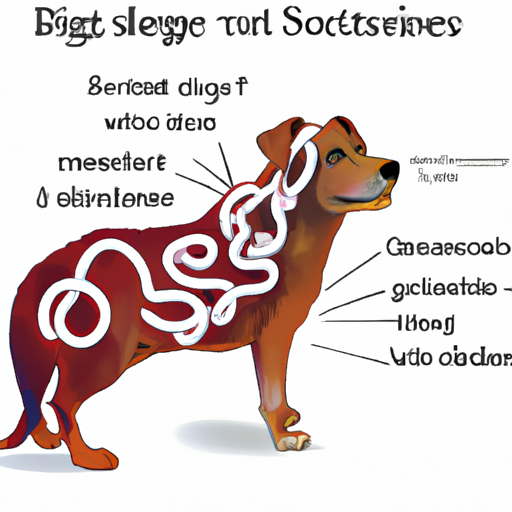Understanding Your Dog’s Stomach
As the caregiver of your beloved pet, you might often find yourself in a state of worry when they experience discomfort. Amongst the many conditions that can trouble your canine companion, twisted stomach, or Gastric Dilatation-Volvulus (GDV), is a severe and potentially fatal one.
Your dog’s stomach is similar to ours in many ways, but it’s also distinctly different. Imagine a large, muscular sac with an enormous capacity. This sac is capable of expansion and contraction, allowing it to accommodate large meals without difficulty. However, this flexibility can sometimes lead to problems.
What Exactly is a Twisted Stomach?
When your dog’s stomach fills with gas and twists on itself, this is known as GDV. This twisting can occur 180 to 360 degrees, causing a physical and functional obstruction. This means not only is the passage of food and gas blocked, but blood supply to the stomach and spleen can also be cut off, leading to tissue damage and potentially, organ failure.
Causes of Twisted Stomach
Numerous factors can contribute to a twisted stomach in dogs, and often, it’s a combination of these that cause the condition.
-
Eating habits: Dogs that eat quickly, consume one large meal daily, or have a history of gastric dilatation are more prone to developing a twisted stomach.
-
Physical attributes: Large breed dogs with deep, narrow chests are at a higher risk. This includes breeds like Great Danes, Saint Bernards, and Weimaraners.
-
Age and gender: Older dogs and males are more likely to have this condition.
-
Stress: High-stress or anxiety levels can also contribute to the risk.
Recognizing the Symptoms
If you are aware of the symptoms of a twisted stomach, you can act quickly, which could potentially save your dog’s life.
- Distended abdomen
- Unproductive vomiting
- Restlessness
- Rapid, shallow breathing
- Salivation
- Signs of shock, such as pale gums and rapid heartbeat
Treatment and Prevention
Immediate veterinary attention is crucial as this is a life-threatening condition. Treatment usually involves stabilization followed by surgery to correct the twist. To prevent recurrence, the stomach is often tacked to the abdominal wall.
Prevention strategies include:
- Feeding multiple small meals instead of one large one
- Avoiding vigorous exercise before and after meals
- Maintaining a calm and stress-free environment
Frequently Asked Questions
1. Are certain dog breeds more prone to a twisted stomach?
Yes, large breed dogs with deep, narrow chests, like Great Danes, Saint Bernards, and Weimaraners, are more susceptible.
2. Can a twisted stomach be prevented?
While there’s no guaranteed method, feeding multiple small meals, avoiding vigorous exercise around meal times, and maintaining a stress-free environment can help reduce the risk.
3. How is a twisted stomach treated?
Immediate veterinary attention is required. Treatment usually involves stabilization followed by surgery to correct the twist.



